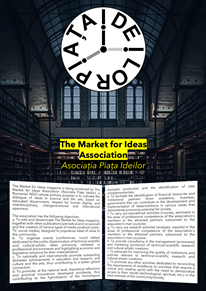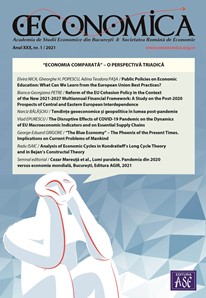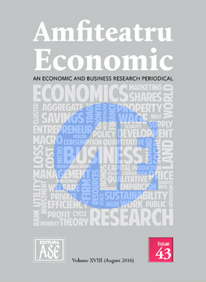
The COVID-19 Pandemic – Changing the Paradigm Sir William Osler: “Medicine is a science of uncertainty and the art of probability”
For almost three months now the entire world is in the midst of a very aggressive and rapidly evolving outbreak with new Coronavirus, that today is known as COVID-19. The origin of the outbreak is in China, the province of Hubei (Wuhan) and its surroundings. Coronaviruses are a large family of respiratory viruses with some causing less-severe disease, such as the common cold, and others more severe disease such as Middle-East Respiratory Syndrome (MERS) and Severe Acute Respiratory Syndrome (SARS). Some transmit easily from person to person, while others do not. The first cases with COVID-19 virus were reported as “pneumonia/respiratory disease of unknown etiology” in the last third of December 2019. The initial symptoms were mild, which permitted many people to travel before stronger symptoms were detected. At that time, the incubation period had not been stated.
The progression of the outbreak was extremely rapid and, as of 20 February 2020, 75,748 confirmed cases were reported globally (China – 74,675, out of China 1,073, with cases in 26 countries). At the time this paper was finalized (10 March 2020) the situation is as follow: globally 117,339 confirmed cases with 4,251 deaths (China – 80,754 with 3,136 fatalities, out of China 36,585 confirmed cases in 102 countries). The data shows that the epidemic in China has slowed significantly, but the extension of outbreak in the world is significant, and it is very difficult at this very time to predict what comes next.
In this article, I am looking to the way the Chinese Government and the Chinese people responded to this dramatic situation. Most data is taken from the Report of the WHO-China Joint Mission on Coronavirus disease 2019 (COVID-19).
Without going into too many epidemiological details, the most important facts identified in China are:
- COVID-19 is a zoonotic virus, bats appear to be the reservoir of COVID-19 virus, but the intermediate host(s) has not yet been identified.
- The COVID-19 virus is a very new brand virus for the humans, and this is the very first contact with the human body, which does not have any natural defense mechanism against it. That explains the large and rapid dissemination within human populations. There are also many other factors that contribute to the extension of the epidemics at Pandemic level in my humble opinion.
- Phylogenetically, the virus is related to the SARS pathogen, the coronavirus responsible for the outbreak in 2003-2004.
- In the media and some scientific communities, there are some allegations that COVID-19 is a man-made virus, and this raises a lot of suspicions in that respect. I have to emphasize the position against these allegations taken by scientists in Science Magazine and the Lancet position in this respect that can be listen on YouTube.
In order to understand and to take the appropriate measures to control and contain the dissemination of the pathogen, local authorities were conducting large investigations of cases onset in Wuhan and surroundings, environmental samplings from the local markets, especially the seafood market, the source and type of wildlife species sold on the local market and the destination of those animals after the marketplace was closed.
I have to underline the huge efforts made by the authorities and the contribution of the population in assisting the authorities in identifying the origin of the animals sold at the local market and identifying the routes by which they have reached the market. Stopping the dissemination of the pathogen among the receptive population is one of the paramount epidemiological measures to hold back this kind of outbreaks.
Routes of transmission
COVID-19 is transmitted via droplets and fomites during close unprotected contact between an infector and the infected. Airborne spread does not seem to be a major driver of transmission. Fecal-oral route has been demonstrated from some number of patients as the viable virus was isolated in a limited number of cases. This route does not seem to be a driver for virus transmission.
The transmission dynamics of any outbreak are inherently contextual. For COVID-19, a few major types of transmission dynamics during the epidemic’s extension were observed. In Wuhan, early cases are believed to have acquired infection from zoonotic sources. Then followed human-to-human transmission in Wuhan prior to the implementation of the control measures outside the Wuhan, respectively the “cordon sanitaire” around Wuhan. The implementation of this measure has effectively prevented future dissemination of the pathogen by infected individuals to the rest of the country. The other measures were focused on limitation of travel and the rigorous control of all travelers by implementation of control measures, including social distancing. However, many cases have also occurred in households. The transmission dynamic was also influenced by the preparedness of the Chinese people to celebrate the Chinese New Year, that is the most important festival of the year. That is a festive period characterized by very extensive mass-movement of individuals across the country, as millions of Chinese flock back to their hometowns to be with their families and relatives.
Facing such an unprecedented situation, the Chinese Government launched a “national emergency response”. The prevention and control measures haven been implemented from the early stages in Wuhan and other areas of Hubei. There were three main phases, implemented progressively: the first being the quarantine of the patients and identified contacts, the border health control and then closing the activity of schools, cultural events and so on. The aim of this actions was to dampen as much as possible the dissemination of the pathogen and the limitation of close contacts.
1. In the face of a previously unknown virus, China has rolled out perhaps the most ambitious, agile and aggressive disease containment effort in history. The strategy that underpinned this containment effort was initially a national approach that promoted universal temperature monitoring, masking, and hand washing. However, as the outbreak evolved, and knowledge was gained, a science and risk-based approach was taken to tailor implementation. Specific containment measures were adjusted to the provincial, county and even community context, the capacity of the setting, and the nature of novel coronavirus transmission there.
2. Achieving China’s exceptional coverage with and adherence to these containment measures has only been possible due to the deep commitment of the Chinese people to collective action in the face of this common threat. At a community level this is reflected in the remarkable solidarity of provinces and cities in support of the most vulnerable populations and communities. Despite ongoing outbreaks in their own areas, Governors and Mayors have continued to send thousands of health care workers and tons of vital PPE supplies into Hubei province and Wuhan city.
3. China’s uncompromising and rigorous use of non-pharmaceutical measures to contain transmission of the COVID-19 virus in multiple settings provides vital lessons for the global response. This rather unique and unprecedented public health response in China reversed the escalating cases in both Hubei, where there has been widespread community transmission, and in the importation provinces, where family clusters appear to have driven the outbreak.
Today, our attention and concerns are focused on Europe, where it seems the epidemic is just at the beginning. At this stage, it is indeed very difficult to predict how the epidemic will evolve.
In the Report of the WHO-China Joint Mission on Coronavirus Disease 2019, there are recommendations for countries with imported cases and/or outbreaks of COVID-19:
1. Immediately activate the highest level of national Response Management protocols to ensure the all-of-government and all-of-society approach needed to contain COVID-19 with non-pharmaceutical public health measures;
2. Prioritize active, exhaustive case finding and immediate testing and isolation, painstaking contact tracing and rigorous quarantine of close contacts;
3. Fully educate the general public on the seriousness of COVID-19 and their role in preventing its spread;
4. Immediately expand surveillance to detect COVID-19 transmission chains, by testing all patients with atypical pneumonias, conducting screening in some patients with upper respiratory illnesses and/or recent COVID-19 exposure, and adding testing for the COVID-19 virus to existing surveillance systems (e.g. systems for influenza-like-illness and SARI); and
5. Conduct multi-sector scenario planning and simulations for the deployment of even more stringent measures to interrupt transmission chains as needed (e.g. the suspension of large-scale gatherings and the closure of schools and workplaces).
A follow up paper will be released about the situation in Europe and other areas when relevant information and data will become available.
However, I do consider that the quote bellow should be taken as very serious warning for the entire “Old World”. This is taken from the paper “Data analysis for the COVID-19 early dynamics in Northern Italy” by G. Gaeta, Dipartimento di Matematica, Universita’ degli Studi di Milano:
The spread of COVID-19 epidemics in Northern Italy is well described by an exponential growth with parameter α ≃ 0.32, with higher values in some regions. This should be compared with the growth rates in China, and in this sense the observed figure is quite worrying because:
1. The absolute value of the growth rate is rather large, and very much similar to the growth rate in the early stage of the epidemics in China (α = 0.33).
2. The substantial reduction of the growth rate in China was due to rather strict measures by the central and local Governments. Restrictive measures have also been taken in Italy, but these are substantially weaker than those adopted in China.








